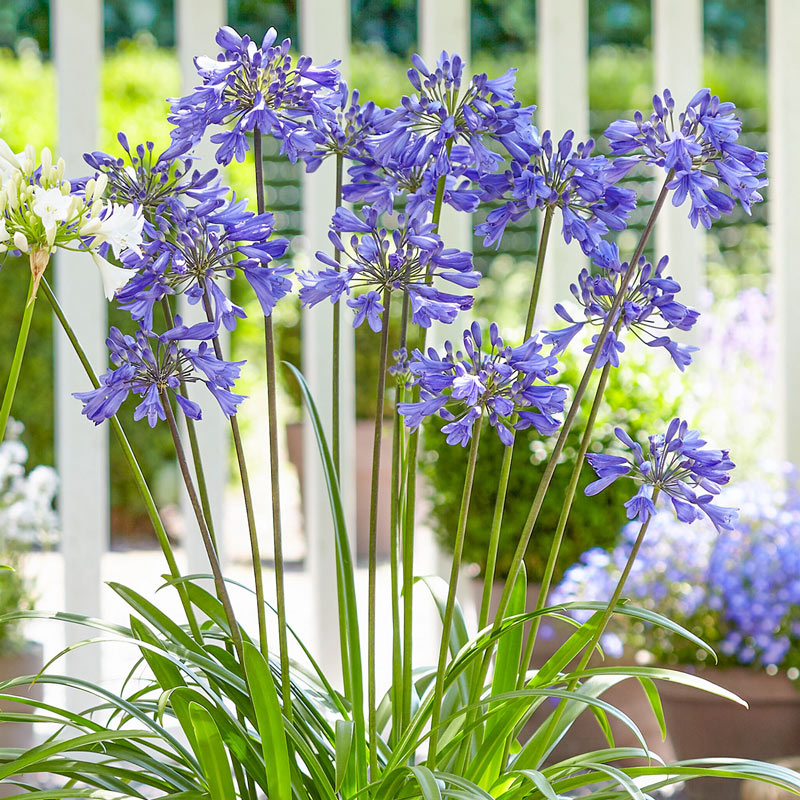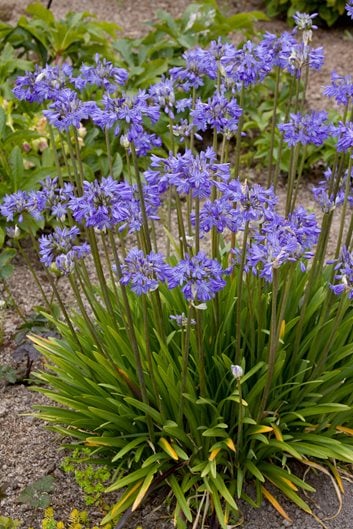Unleashing the Secret to Successful Agapanthus Growing: Idea for a Flourishing Garden
In the world of gardening, growing agapanthus efficiently needs a critical method that incorporates various aspects of plant treatment. By comprehending the nuances of agapanthus farming, one can produce a setting where these plants thrive and grow generously.
Growing Agapanthus: Best Practices
When planting Agapanthus, correct dirt preparation is vital for making certain successful growth and advancement of these beautiful blossoms. Agapanthus, generally referred to as Lily of the Nile or African lily, grows in well-draining soil with a somewhat acidic to neutral pH degree - Agapanthus. Before planting, it is important to modify heavy clay soils with organic matter such as compost or peat moss to enhance drain and supply vital nutrients for the plants
To grow Agapanthus, pick a place that obtains complete sunlight to partial shade, as this will advertise healthy development and plentiful blooming. Dig a hole two times the size of the plant's root sphere and position the Agapanthus at the exact same depth it was previously growing. Gently backfill the opening with dirt, weighing down strongly to get rid of any kind of air pockets around the origins.
Water the recently planted Agapanthus completely and continue to keep the soil uniformly damp, particularly during the plant's active expanding period. Agapanthus. Applying a balanced fertilizer once a month can better sustain the plant's development and flowering. By complying with these best practices for planting Agapanthus, you can develop a sensational screen of these captivating flowers in your garden
Suitable Dirt Issues for Agapanthus
For optimum development and blooming success of Agapanthus plants, making certain the dirt conditions are perfect is essential. Agapanthus flourishes in well-draining dirt with a slightly acidic to neutral pH level varying from 6.0 to 7.0. This kind of soil permits sufficient water drain, stopping waterlogging which can cause root rot. To improve soil drain, take into consideration including raw material such as garden compost or peat moss when preparing the planting site. Moreover, Agapanthus favors soil that is rich in nutrients, so incorporating a well balanced fertilizer throughout the expanding season can promote healthy and balanced growth and vivid flowers.

Watering and Feeding Tips
To make certain healthy and balanced development and vivid blossoms, correct watering and fertilizing methods are necessary for effective Agapanthus farming. Agapanthus plants gain from normal watering, specifically during the expanding period. It is recommended to water deeply once a week, ensuring the dirt is damp but not waterlogged. Throughout warm weather condition or in pots, more frequent watering might be needed to stop the soil from drying out entirely.
When it involves fertilizing Agapanthus, a balanced plant food with equal components nitrogen, phosphorus, and potassium can be used in the spring to advertise healthy growth and blooming. Slow-release fertilizers are excellent for supplying nutrients slowly over an extended period. Stay clear of over-fertilizing, as this can result in too much foliage development at the expense of blossoms.
In addition, integrating raw material like garden compost right into the dirt can improve nutrient degrees and boost dirt structure, assisting in the total health and wellness of the Agapanthus plants. By adhering to these watering and fertilizing pointers, gardeners can ensure their Agapanthus plants grow and generate spectacular display screens of flowers.
Trimming and Deadheading Techniques
Correct trimming and deadheading techniques play a critical function in maintaining the health and aesthetics of Agapanthus plants, matching the essential methods of watering and feeding for successful growing. Trimming Agapanthus involves eliminating invested blossom heads, dead or yellowing leaves, and overall shaping of the plant to promote far better development. Deadheading, the procedure of getting rid of faded flowers, not only enhances the plant's look but additionally urges further blooming.
When deadheading Agapanthus, it is a good idea to clip off the blossom stem at the base using sharp, clean shears. This process reroutes the plant's power from seed manufacturing back right into origin and vegetation growth, advertising a much healthier and extra durable plant. Normal deadheading can expand the growing duration of Agapanthus and stop self-seeding, which can bring about congestion.
In regards to pruning, Agapanthus typically gain from a light trim after flowering to clean the plant and motivate fresh development. Cutting back the spent flower stems and removing any dead or damaged vegetation helps keep the plant's vigor and overall look. Nevertheless, it is important to prevent cutting into the crown of the plant, as this can deteriorate additional resources its health and wellness.

Protecting Agapanthus From Vermins and Diseases
Carrying out effective pest and illness administration techniques is essential to safeguarding the health and vigor of Agapanthus plants in growing. Agapanthus are generally durable plants, but they can still drop sufferer to numerous bugs and conditions if not properly taken care of. One common parasite that impacts Agapanthus is the Agapanthus borer, a caterpillar that tunnels right into the plant, triggering damage to the fallen leaves and flowers. To avoid invasions, normal evaluation of the plants is important. If borers are spotted, they can be manually removed, or insecticidal soap can be used as a control step.
Along with parasites, Agapanthus are susceptible to conditions such as root rot and fungal leaf areas. These concerns can typically be protected against by ensuring appropriate water drainage and avoiding overwatering. If indicators of disease appear, affected parts of the plant ought to be immediately gotten rid of to avoid more spread. Fungicides might additionally be made use of as a therapy action, following the maker's directions very carefully. By remaining attentive and attending to bug and condition concerns immediately, gardeners can help their Agapanthus flourish and prosper.

Verdict
In conclusion, effective cultivation of agapanthus needs correct planting methods, excellent soil conditions, ample watering and feeding, routine trimming and deadheading, and view publisher site protection from bugs read more and conditions. By following these ideas and methods, gardeners can guarantee a prospering garden filled up with stunning agapanthus blooms. Agapanthus. Keep in mind to preserve regular treatment and interest to information to advertise the health and wellness and long life of these stunning plants
When planting Agapanthus, correct soil preparation is vital for making certain successful growth and advancement of these gorgeous blossoms.Water the freshly planted Agapanthus completely and continue to keep the soil uniformly damp, particularly during the plant's active growing period.For ideal development and flowering success of Agapanthus plants, making sure the dirt problems are suitable is important. When hair transplanting or growing Agapanthus, ensure the soil is well-prepared to provide the necessary structure for the plants to develop themselves effectively. One typical parasite that influences Agapanthus is the Agapanthus borer, a caterpillar that passages into the plant, triggering damage to the leaves and blossoms.